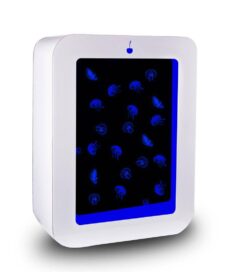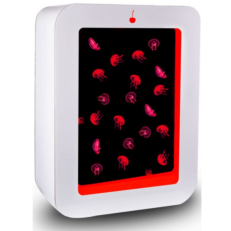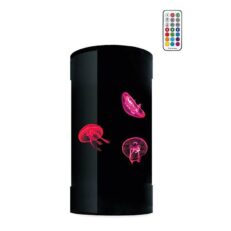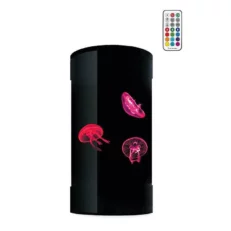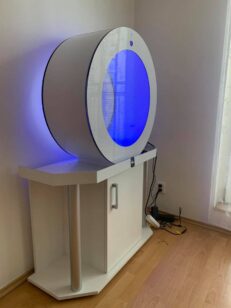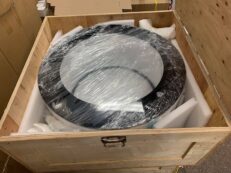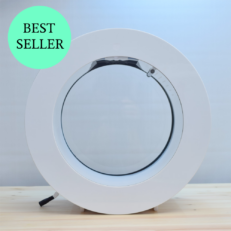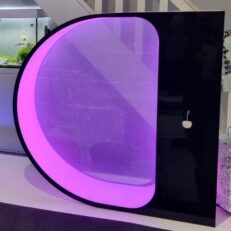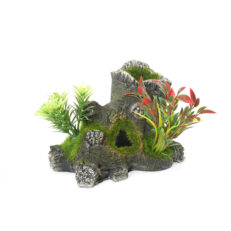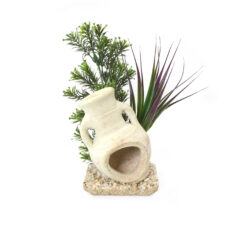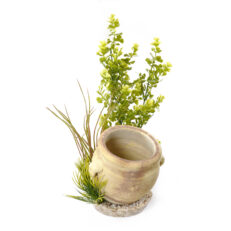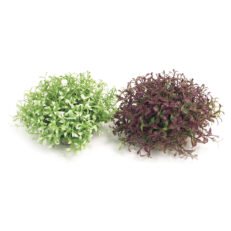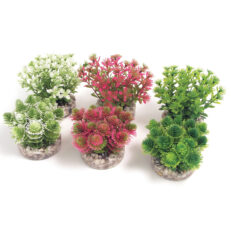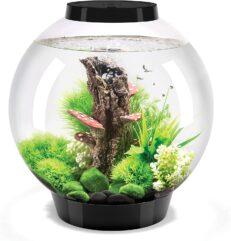Jellyfish, with their ethereal forms and graceful movements, captivate the hearts of many. These fascinating creatures of the sea are known for their mesmerizing beauty, drifting elegantly through the water like living pieces of art. Their unique and otherworldly appearance makes them a mystical presence in any environment, enchanting observers with a serene display of nature’s wonder.
This guide is crafted with the beginner in mind, a comprehensive roadmap to embarking on the rewarding journey of jellyfish keeping. Setting up your first jellyfish tank can be a daunting task, filled with nuances and specific requirements unique to these delicate marine animals. Our aim is to simplify this process, providing you with the essential knowledge and steps to create a thriving habitat for your new jellyfish.
Embarking on the journey of jellyfish keeping is not just about the aesthetic enhancement they offer. It is a commitment to responsible pet ownership. Jellyfish, with their specific environmental needs and delicate nature, require careful and informed care. This guide emphasizes the importance of understanding and meeting these requirements, ensuring the health and well-being of your jellyfish. It’s about creating a sustainable and safe ecosystem that respects these captivating creatures while providing an awe-inspiring glimpse into the aquatic world.
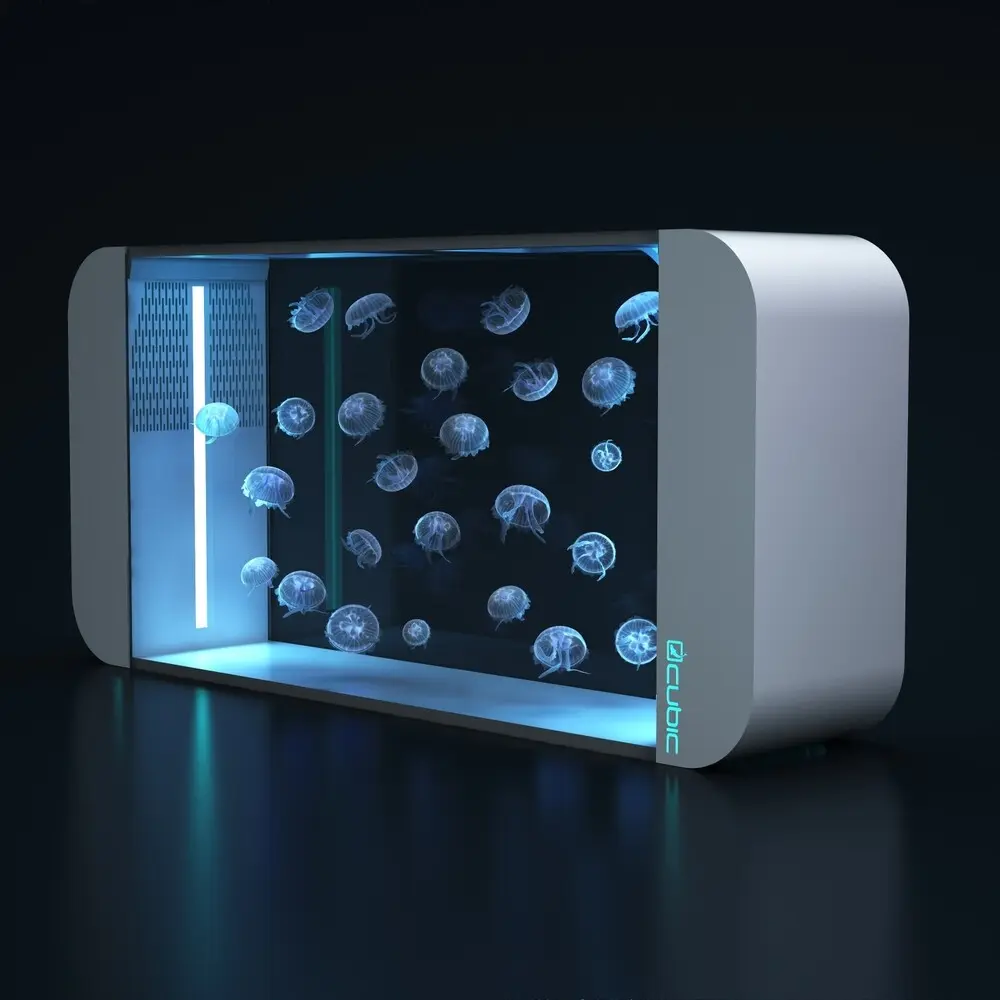
The Fascinating World of Jellyfish
A. Overview of Jellyfish as Captivating Aquatic Creatures
Jellyfish are one of the most captivating creatures in the aquatic world. With their graceful, pulsating movements and often luminescent bodies, they create an almost otherworldly presence in the water. Jellyfish are not fish but invertebrates, belonging to the phylum Cnidaria, which also includes corals and sea anemones. They are known for their gelatinous bodies and trailing tentacles, which can be equipped with stinging cells used for capturing prey or defense. There are over 2000 species of jellyfish, ranging from the common moon jellyfish to the deadly box jellyfish. These creatures can be found in every ocean, from the surface to the deep sea, and vary greatly in size, color, and habitat.
B. Different Jellyfish Species Suitable for Home Aquariums
Jellyfish are increasingly popular in home aquariums due to their unique beauty and the serene ambiance they create. However, not all species are suitable for home aquaria. The Moon Jellyfish (Aurelia aurita) is one of the most common species kept in home aquariums. They are relatively easy to care for and can thrive in stable tank conditions. Another popular choice is the Blue Blubber Jellyfish (Catostylus mosaicus), known for its striking blue color. These species require specialized tanks, known as kreisel tanks, which provide a gentle circular water flow to keep them suspended. Jellyfish tanks need to be equipped with specific filtration systems to ensure the animals are not injured by water intake or output mechanisms.
C. Challenges and Rewards of Keeping Jellyfish
Keeping jellyfish at home comes with unique challenges but also significant rewards. One of the primary challenges is maintaining the water quality and temperature, as jellyfish are sensitive to changes in their environment. The tank’s filtration system must be meticulously maintained to keep the water clean and free of harmful bacteria. Another challenge is feeding; jellyfish typically feed on plankton, which can be difficult to replicate in a home aquarium.
Despite these challenges, the rewards of keeping jellyfish are plentiful. Observing these tranquil creatures can be a highly soothing and meditative experience. Their gentle movements and often colorful bodies add a unique and mesmerizing element to any home. Additionally, the care of jellyfish can be a rewarding hobby for those interested in marine biology and the intricacies of aquatic ecosystems.
When it comes to setting up a jellyfish tank, meticulous planning and understanding of specific requirements are crucial. Jellyfish are unique and delicate creatures, requiring specific conditions for their survival and well-being. This guide covers essential factors and considerations for planning your jellyfish tank.
Essential Factors to Consider Before Starting
1. Tank Size and Shape
- Size: The size of the tank is a critical factor. Jellyfish require enough space to move freely without being damaged by the tank’s boundaries or filtration system.
- Shape: Traditional rectangular fish tanks are not suitable for jellyfish due to corners where they can get trapped. Instead, a circular or cylindrical “kreisel” tank is recommended, which helps in creating a gentle flow of water to keep the jellyfish suspended.
2. Location and Lighting
- Location: The tank should be placed in a stable, level area away from direct sunlight, which can cause temperature fluctuations and algae growth.
- Lighting: Proper lighting not only enhances the aesthetic appeal of the tank but also supports the health of the jellyfish. LED lights are often preferred for their efficiency and ability to create a mesmerizing display.
3. Filtration and Water Quality
- Filtration System: A high-quality filtration system is essential to maintain clean and stable water conditions. Jellyfish are sensitive to changes in water quality, so a reliable system is necessary.
- Water Quality: Regular monitoring of water parameters such as pH, salinity, and nitrate levels is crucial. Maintaining the right conditions ensures the health and longevity of the jellyfish.
Significance of Budgeting for Ongoing Maintenance
Budgeting for ongoing maintenance is as important as the initial setup. Maintaining a jellyfish tank involves:
- Regular Water Changes: Routine changes are necessary to keep the water clean and safe.
- Filtration Maintenance: Regular cleaning and replacement of filter components are required to keep the system functioning efficiently.
- Feeding Costs: Jellyfish diets can vary, and the cost of specialized jellyfish food should be factored into the budget.
- Energy Costs: Running the filtration system, lights, and any additional heaters or coolers contributes to the overall energy cost.
In conclusion, setting up a jellyfish tank requires careful consideration of the tank design, location, and maintenance needs. Budgeting for these factors is crucial for the successful and sustainable keeping of jellyfish.
Selecting the Right Equipment for Your Jellyfish Tank
Setting up a jellyfish tank is an exciting endeavor, but it requires the right equipment to ensure a healthy environment for these delicate creatures. Here’s a breakdown of the essential items you’ll need:
Necessary Equipment for a Jellyfish Tank
Tank and Stand:
- Tank: Choose a tank specifically designed for jellyfish, often called a ‘kreisel’ tank. These tanks provide a circular flow of water to mimic the jellyfish’s natural ocean habitat and prevent them from getting stuck in corners.
- Stand: Ensure the stand is sturdy and capable of supporting the weight of the tank when filled with water. It should be level to avoid uneven water distribution.
Filtration System:
- Essential for maintaining water quality and removing waste products. A good filtration system will have mechanical, chemical, and biological components. The system should be gentle enough to not harm the jellyfish.
Lighting:
- Jellyfish tanks typically require LED lighting to showcase the jellyfish and provide a day-night cycle. Some species require specific light wavelengths, so research your jellyfish’s needs.
Temperature Control:
- A chiller or heater may be necessary to maintain a consistent water temperature, depending on your jellyfish species and room temperature.
Circulation Pumps:
- These are crucial for creating a flow within the tank that mimics the ocean currents. The flow should be gentle to prevent harming the jellyfish.
Tips on Choosing Quality Equipment Within Your Budget
- Research: Before making any purchases, research different brands and read reviews from other jellyfish keepers.
- Invest in Quality: Don’t compromise on the quality of critical items like the filtration system and tank. Poor-quality equipment can lead to long-term costs and health issues for the jellyfish.
- Compare Prices: Shop around and compare prices from different retailers. Sometimes, buying items in a bundle can be more cost-effective.
- Seek Expert Advice: If possible, consult with an expert or more experienced jellyfish keepers for recommendations on reliable equipment.
- Start Small: If you’re on a tight budget, consider starting with a smaller tank and fewer jellyfish, which can reduce initial costs.
- Plan for Future Expenses: Remember to account for ongoing expenses such as food, water testing kits, and replacement filters.
By selecting the right equipment and taking the time to set up your jellyfish tank properly, you can create a tranquil and healthy environment for your jellyfish to thrive. Remember, the initial investment in quality equipment can lead to a more successful and enjoyable jellyfish-keeping experience in the long run.

Setting Up Your Jellyfish Tank: A Step-by-Step Guide
Creating a suitable habitat for your jellyfish is a meticulous but rewarding process. Here’s a step-by-step guide to setting up your jellyfish tank:
Step-by-Step Process of Setting Up Your Jellyfish Tank
Tank Placement and Preparation:
- Select a Location: Choose a stable, level surface away from direct sunlight, high traffic areas, and electronic equipment. Ensure the location can support the weight of a fully set-up tank.
- Clean the Tank: Wash the tank with water only; avoid soaps or chemicals. Rinse thoroughly to ensure it’s free from any residue.
Filling the Tank with Saltwater:
- Prepare Saltwater: Use a marine salt mix and dechlorinated water to prepare the saltwater. The specific gravity should be between 1.023 and 1.026 for most jellyfish species.
- Add Saltwater: Carefully fill the tank with the prepared saltwater, avoiding any vigorous splashing that can create bubbles.
Installing Filtration and Circulation Systems:
- Set Up Filtration: Install your filtration system as per the manufacturer’s instructions. Ensure it’s appropriate for a jellyfish environment, offering gentle filtration.
- Install Circulation Pumps: Position the circulation pumps to create an even, laminar water flow, mimicking the natural ocean currents.
Adjusting Water Parameters:
- Test Water Parameters: Check the pH, ammonia, nitrite, and nitrate levels. The ideal pH level should be around 8.0-8.3.
- Temperature Control: Set up your heater or chiller to maintain the right temperature for your jellyfish species.
Cycling the Tank:
- Start the Nitrogen Cycle: Introduce a source of ammonia to begin the cycling process. This establishes beneficial bacteria that convert ammonia and nitrites to nitrates.
- Monitor and Wait: Regularly test the water. Cycling can take several weeks to complete. Only add jellyfish once ammonia and nitrites are at 0, and nitrates are under control.
Emphasize the Importance of Patience During the Initial Setup
- Patience is Key: The initial setup of a jellyfish tank is not something to rush. Taking the time to properly cycle the tank and stabilize the environment is crucial for the health of your jellyfish.
- Avoid Shortcuts: Shortcuts can lead to unstable water conditions, which can be harmful, if not fatal, to jellyfish.
- Monitoring: Regular testing and observation during the initial phase are essential. Adjustments may be needed to ensure the tank is a suitable habitat for your jellyfish.
Setting up a jellyfish tank is a process that requires attention to detail, understanding of the specific needs of jellyfish, and patience. By carefully following these steps and ensuring that each component of the tank is optimally arranged and functioning, you create a foundation for a thriving and mesmerizing jellyfish habitat. Remember, the effort you put in during these initial stages will set the tone for your jellyfish-keeping experience.

Jellyfish Species Selection for Home Aquariums
A. Beginner-Friendly Jellyfish Species
Starting a jellyfish aquarium can be a rewarding experience, especially with the right species that are suitable for beginners. Here are a few species that are relatively easier to care for:
Moon Jellyfish (Aurelia aurita): Known for their translucent, saucer-shaped bodies, Moon Jellyfish are a popular choice for novice jellyfish keepers. They grow up to 12 inches in diameter but are typically smaller in aquariums.
Blubber Jellyfish (Catostylus mosaicus): Recognizable by their blue or white color and dome-shaped bell, Blubber Jellyfish are a bit more resilient than other species, making them a good choice for beginners.
Spotted Lagoon Jellyfish (Mastigias papua): These jellyfish are smaller and display a range of colors and spots. They are known for their active swimming and are a visually appealing option for home aquariums.
B. Specific Requirements and Characteristics
Each of these jellyfish species has specific requirements and characteristics:
Moon Jellyfish: They thrive in water temperatures between 60-70°F (15-21°C) and require a kreisel tank to simulate the open ocean’s gentle flow. Their diet consists mainly of plankton, brine shrimp, or specially formulated jellyfish food.
Blubber Jellyfish: These jellyfish prefer slightly warmer temperatures, around 65-77°F (18-25°C). They also need a kreisel tank for proper care. Their diet is similar to that of Moon Jellyfish, but they can be a bit more forgiving in terms of water quality.
Spotted Lagoon Jellyfish: They require temperatures between 75-82°F (24-28°C) and can be kept in standard aquariums with gentle water flow. Their diet includes zooplankton and small brine shrimp.
C. Compatibility in a Single Tank
Mixing different jellyfish species in a single tank can be challenging due to differing environmental and dietary needs. It’s generally recommended to keep a single species in a tank to ensure optimal conditions for each type. For example, combining Moon and Blubber Jellyfish could be problematic due to their different temperature preferences. Additionally, the physical structure of different species can vary, and some might have more potent stings that could harm other jellyfish.
For those interested in multiple species, separate tanks are advisable. This approach allows for tailored environments and care routines specific to each species, ensuring the health and well-being of the jellyfish.
Selecting the right jellyfish species for a home aquarium is crucial, especially for beginners. Moon Jellyfish, Blubber Jellyfish, and Spotted Lagoon Jellyfish are great starter options, each with its unique requirements. While it’s tempting to mix species in one tank, it’s essential to consider their specific needs to provide the best care.
Observing and Interacting with Your Jellyfish
Observation Techniques
- Gentle Observation: Unlike traditional pets, jellyfish are best enjoyed through observation. Watching their graceful movements can be a serene experience.
- Lighting Effects: Utilize the LED lighting of your tank to observe the captivating colors and movements of the jellyfish. Different lighting can bring out different aspects of their beauty.
Safe Interaction
- Handling Caution: Jellyfish are delicate creatures and should not be handled. Any interaction should prioritize their safety and well-being.
- Feeding Rituals: Feeding your jellyfish can be an interactive experience. Use this time to observe their behaviors and ensure they are healthy.
Soothing and Therapeutic Aspects of Jellyfish Tanks
- Stress Relief: The gentle undulating movements of jellyfish are known to have a calming effect, making them excellent for stress relief.
- Therapeutic Presence: Many people find the presence of a jellyfish tank in a room to be therapeutic, helping to create a peaceful and meditative environment.
Creating an Aesthetic and Relaxing Tank Environment
Tank Placement
- Strategic Location: Place your tank in a location where it can be easily viewed, such as a living room or office, to maximize its soothing benefits.
- Avoid Direct Sunlight: To maintain optimal tank conditions and prevent algae growth, avoid placing it in direct sunlight.
Decorative Elements
- Minimalistic Design: A simple, clean design often works best for jellyfish tanks, as it doesn’t distract from the jellyfish themselves.
- Complementary Lighting: Use lighting to enhance the visual appeal of your tank. Soft, subtle colors can create a more relaxing atmosphere.
Ambience Enhancement
- Background Music: Soft, ambient music can complement the tranquil nature of a jellyfish tank.
- Room Decor: Coordinate the room’s decor with your tank for a harmonious and aesthetically pleasing environment.
Enjoying your jellyfish aquarium is about creating a space that is both a sanctuary for the jellyfish and a source of tranquility for you. By focusing on observation, appreciating the therapeutic aspects, and creating a pleasing environment, you can fully enjoy the unique beauty and serenity of your jellyfish aquarium.
Troubleshooting Common Issues in Jellyfish Tank Maintenance
Maintaining a jellyfish tank can be a rewarding experience, but it’s not without its challenges, especially for beginners. Understanding common issues and knowing how to address them is key to keeping a healthy environment for your jellyfish. Let’s explore some potential challenges and their solutions.
Addressing Potential Challenges and Problems Beginners Might Encounter
Water Quality Issues:
- Problem: Poor water quality is a common challenge, indicated by cloudiness, color changes, or foul odor. This can be due to overfeeding, inadequate filtration, or insufficient cycling.
- Solution: Regularly test water parameters (pH, ammonia, nitrite, nitrate, and salinity) and perform water changes as needed. Ensure the filtration system is functioning properly.
Jellyfish Health Problems:
- Problem: Signs of unhealthy jellyfish include shrinking, discoloration, or unusual floating patterns.
- Solution: Assess and adjust water quality, check for proper tank temperature, and ensure the diet is appropriate for the species. Reduce stress by minimizing changes in the tank.
Mechanical Failures:
- Problem: Equipment like pumps or filters might malfunction, affecting water circulation and filtration.
- Solution: Regularly inspect and maintain equipment. Keep spare parts or a backup system to quickly address any malfunctions.
Inappropriate Tank Conditions:
- Problem: Incorrect flow rate, temperature, or lighting can stress jellyfish.
- Solution: Monitor and adjust the flow rate to ensure gentle movement. Keep the tank temperature consistent and appropriate for the species. Use lighting that suits the needs of your jellyfish.
Solutions and Advice for Maintaining a Healthy Jellyfish Tank
Consistent Maintenance Routine:
- Establish a routine for daily, weekly, and monthly maintenance tasks. Regular care prevents many common issues.
Proper Feeding Practices:
- Feed your jellyfish the right type and amount of food. Overfeeding leads to poor water quality and health issues.
Regular Monitoring:
- Observe your jellyfish and their environment daily. Early detection of problems allows for quicker interventions.
Educate Yourself Continuously:
- Keep learning about jellyfish care. Join forums, read books, or consult with experts to stay informed.
Avoid Overstocking:
- Too many jellyfish in a tank can lead to crowding, increased waste, and depleted oxygen levels.
Water Change Discipline:
- Perform regular partial water changes to maintain water quality. This helps remove waste products and replenish essential minerals.
Emergency Preparedness:
- Have a plan for power outages or equipment failures. Knowing what to do in emergencies can save your jellyfish.
By addressing these common challenges with informed solutions, you can maintain a healthy and thriving environment for your jellyfish. Remember, patience and attention to detail are key in the delicate art of jellyfish keeping. With proper care and maintenance, your jellyfish tank can be a source of endless fascination and beauty.
Responsible Jellyfish Ownership
A. Ethical and Sustainable Jellyfish Keeping
Responsible ownership of jellyfish goes beyond just providing them with a suitable home. It encompasses ethical and sustainable practices that ensure the well-being of these creatures and the environment. Here are some key considerations:
Sourcing: Always acquire jellyfish from reputable suppliers who practice sustainable and ethical breeding. Wild-caught jellyfish can be detrimental to ocean ecosystems and may not adapt well to aquarium life.
Understanding Jellyfish Needs: Jellyfish require specific water conditions, diets, and tank environments. It’s crucial to thoroughly research and understand these needs to ensure their well-being in captivity.
Environmental Impact: Consider the environmental footprint of maintaining a jellyfish aquarium. This includes the energy consumption of the tank and the sourcing of food.
Avoiding Release into the Wild: Never release captive jellyfish into the wild. They can become invasive species in new environments, upsetting local ecosystems and harming native species.
B. Supporting Conservation Efforts
Owning jellyfish can also be an opportunity to contribute to broader conservation efforts:
Education and Awareness: Use your experience to educate others about jellyfish and marine conservation. Sharing knowledge about these unique creatures can inspire others to care about marine life and its preservation.
Participating in Citizen Science: Some organizations and research projects welcome data from jellyfish owners, which can contribute to scientific understanding of these species.
Supporting Marine Conservation Organizations: Consider supporting organizations that work towards ocean conservation. This can be through donations, volunteering, or participating in campaigns.
Sustainable Practices: Implement sustainable practices in other areas of your life to contribute to the health of our oceans. This includes reducing plastic use, supporting sustainable fisheries, and being mindful of your carbon footprint.
In conclusion, setting up and maintaining a jellyfish tank is a unique and captivating hobby that requires careful planning and dedication. Here is a summary of the key steps and considerations, along with encouragement for beginners and a reminder of the importance of prioritizing the well-being of the jellyfish and the marine ecosystem.
Key Steps and Considerations for Setting Up a Jellyfish Tank
- Choosing the Right Tank: Opt for a kreisel or circular tank to accommodate the delicate nature of jellyfish.
- Location and Lighting: Place the tank in a stable, level area away from direct sunlight and use LED lighting for both health and aesthetic purposes.
- Water Quality and Filtration: Invest in a high-quality filtration system and regularly monitor water parameters to ensure a healthy environment for your jellyfish.
- Ongoing Maintenance: Be prepared for regular maintenance tasks, including water changes, filter maintenance, and feeding.
Encouragement for Beginners
For those new to this hobby, starting a jellyfish aquarium can be a deeply rewarding experience. While it may seem daunting initially, the beauty and tranquility that a jellyfish tank offers are well worth the effort. Beginners should embrace the learning process and seek advice from experienced aquarium enthusiasts and professionals.
Prioritizing Jellyfish Well-being and Marine Ecosystem
- Responsible Ownership: Always prioritize the health and well-being of your jellyfish. This includes not only proper tank maintenance but also ethical sourcing of your jellyfish.
- Ecosystem Awareness: Understand and respect the role these creatures play in the marine ecosystem. Being a jellyfish owner comes with the responsibility to contribute positively to the preservation of marine life.
In summary, setting up a jellyfish tank is an engaging and fulfilling hobby that brings beauty and serenity into your space. It offers an opportunity to learn about and contribute to the marine ecosystem while enjoying the therapeutic benefits of jellyfish watching. With the right approach and commitment, anyone can successfully embark on this fascinating journey.

